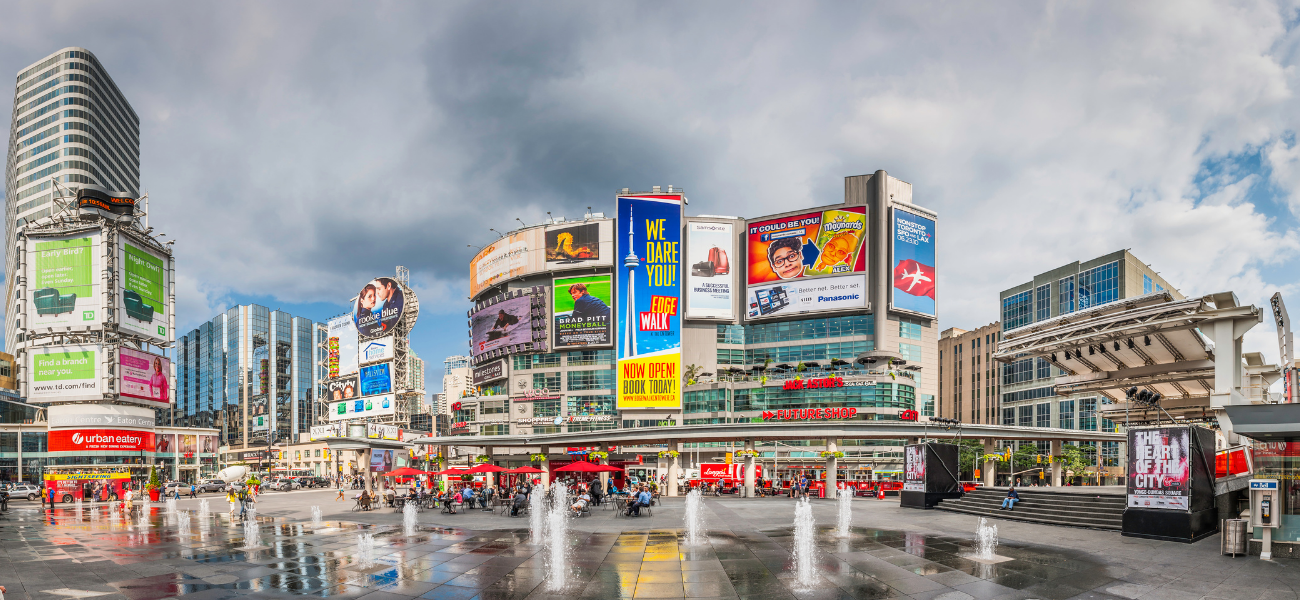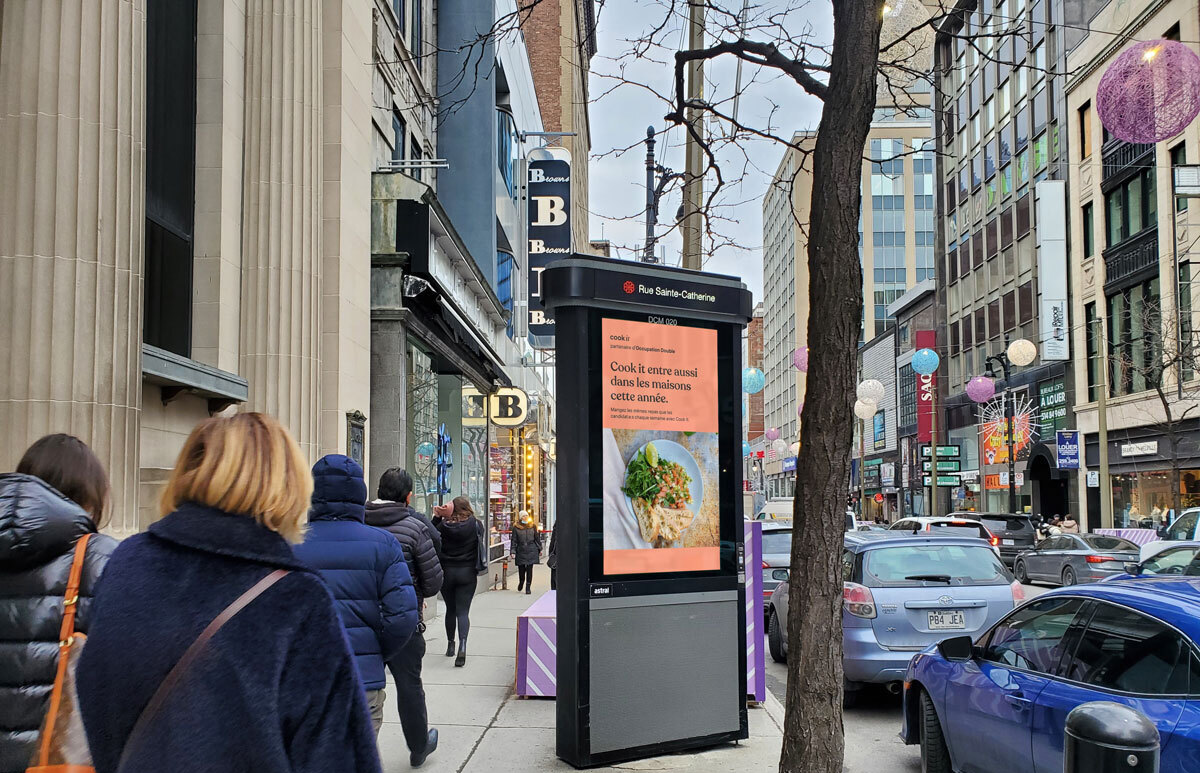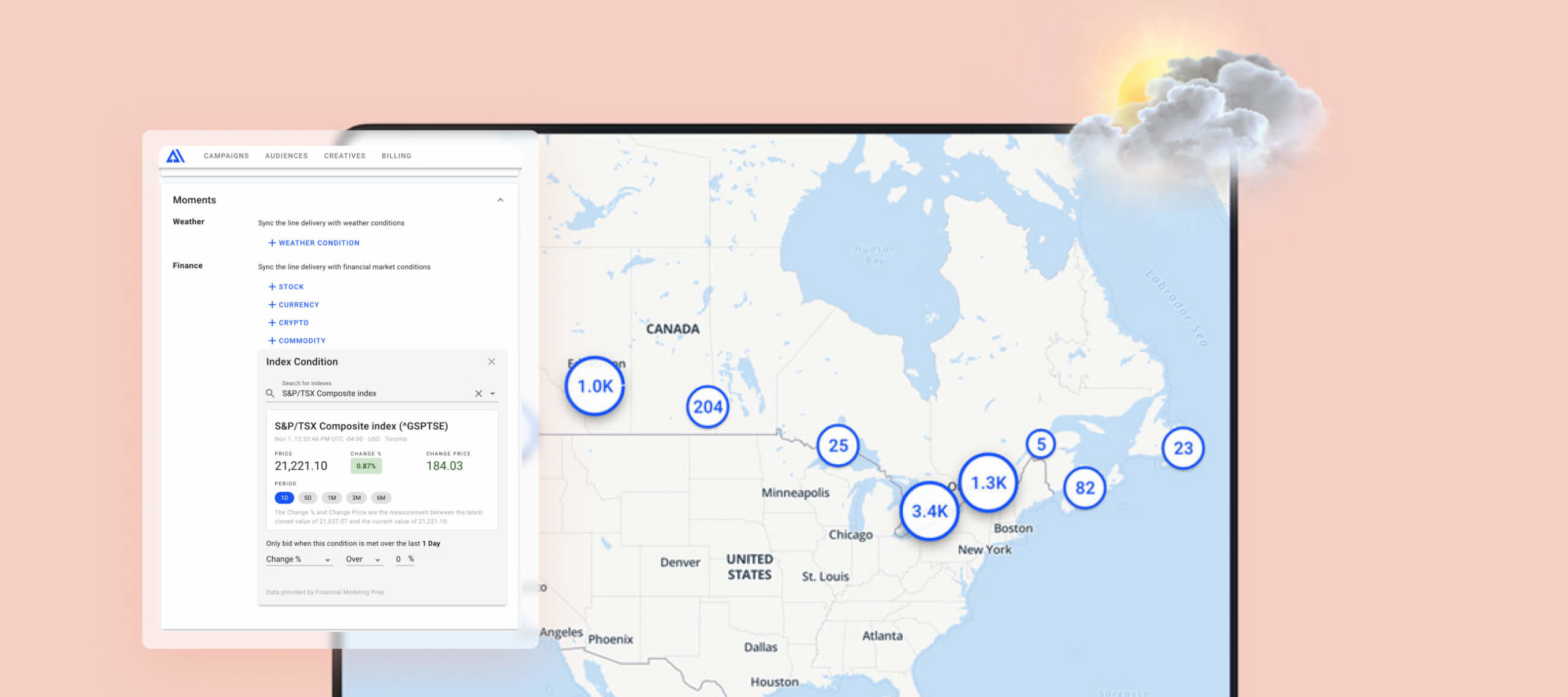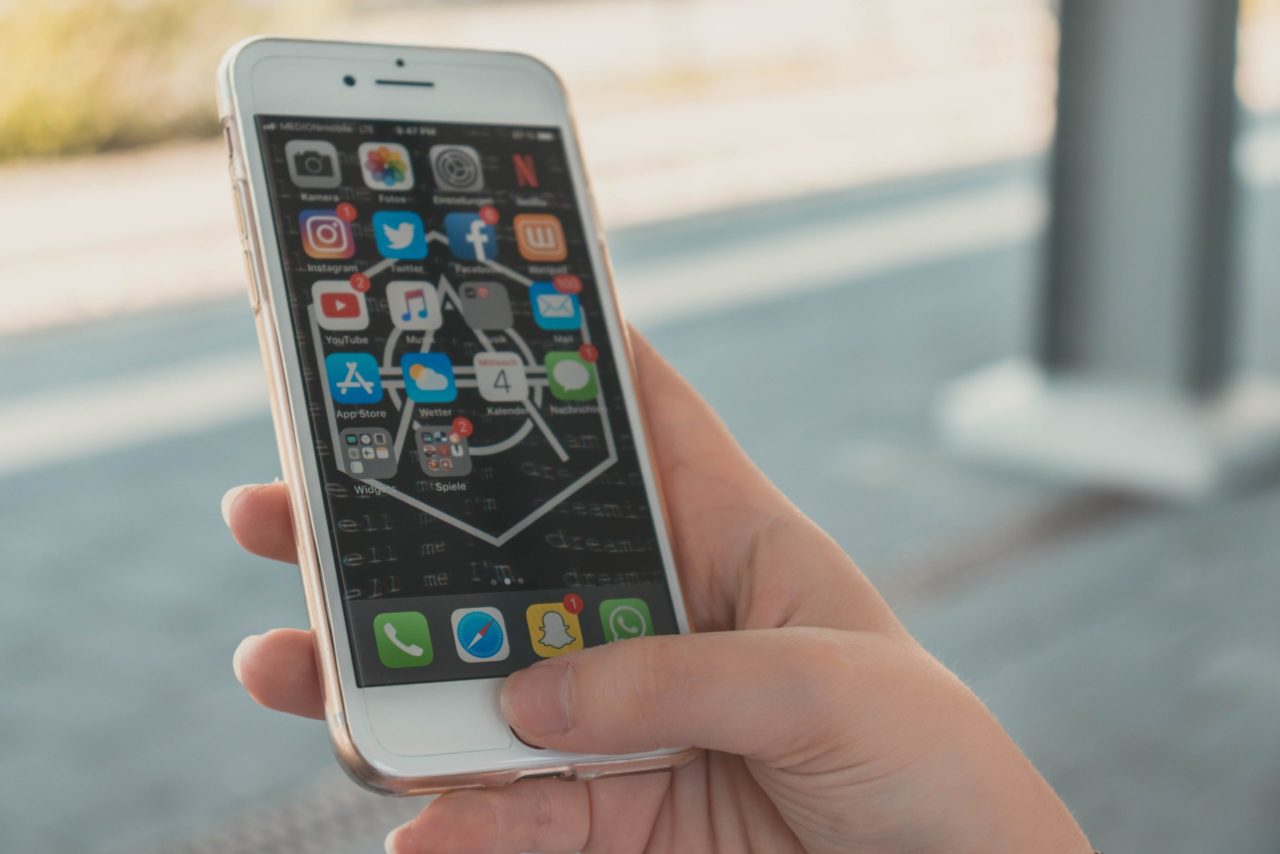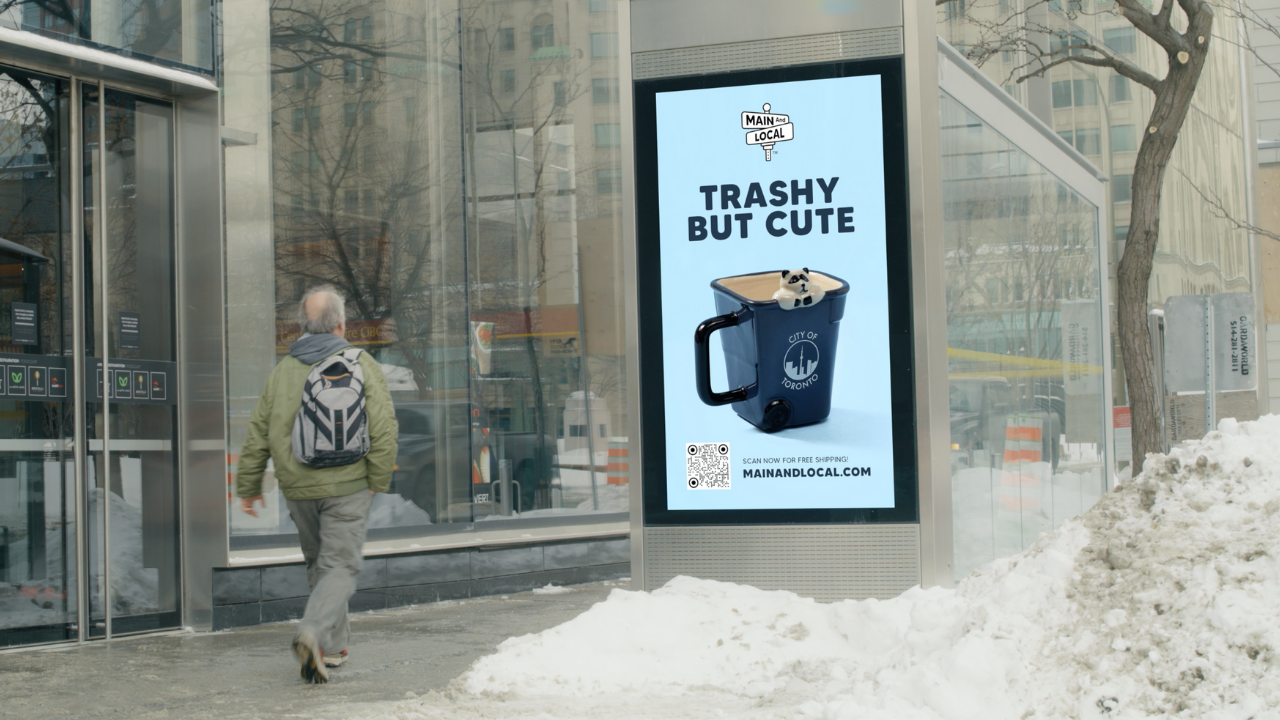Programmatic advertising is hardly a new concept for Montreal-based agency Fidelitix. Founded in 2015, Fidelitix works with brands and advertisers to manage all aspects of
Continue readingCreate interactive consumer experiences and measure OOH ad exposure with dynamic QR codes
The OOH industry is projected to grow in 2022 as consumers become more optimistic and spending begins to pick up. According to the latest insights report from the OAAA and Harris Poll Consumer Insights and Intent for Early 2022, 47% of consumers in major cities are noticing OOH ads compared to pre-pandemic levels. The study found that 85% of viewers think OOH ads are useful, with a further 42% saying they pay the most attention to ads that feature promotions or special offers.
As OOH comes back, there are some changes in trends that are occurring throughout the industry. QR codes are making a comeback thanks to their touch-free technology and ability to provide brands with measurable consumer data. In fact, one study found that the number of QR code coupons that will be redeemed by a mobile device in 2022 is expected to reach 5.3 billion – more than triple the 1.3 billion redemptions reported in 2017. With today’s consumers more accustomed to scanning QR codes than ever before, brands are increasingly including them in their campaigns to provide personalized offerings like product information, promotions, and coupons.
With Campsite’s recent partnership with ACTV8me, brands and advertisers can create interactive experiences through the use of dynamic QR codes incorporated into creatives. The partnership enables brands to increase engagement while adding a layer of attribution measurement that helps evaluate OOH ad performance with real-time consumer data.
Collect valuable insights while creating a one-to-one customer experience
By incorporating dynamic QR codes into any OOH creative, advertisers can create a direct-to-consumer experience through contextual offerings like coupons and promotions, adding a transactional layer to their campaigns. Consumers can access valuable information that enhances their brand experience by easily scanning and transacting through their mobile devices, helping drive converted sales that can be directly attributed to each campaign.
How it works
- Viewers scan a participating QR code via their mobile device’s camera.
- They are redirected to a microsite where they can immediately redeem offers or save them to mobile wallets like Apple Pay and Google Pay.
- Once saved, they are sent reminders and notifications when promotions are set to expire or when approaching an activated point of interest.
- Engagement data is collected, saved, and delivered to the advertiser.
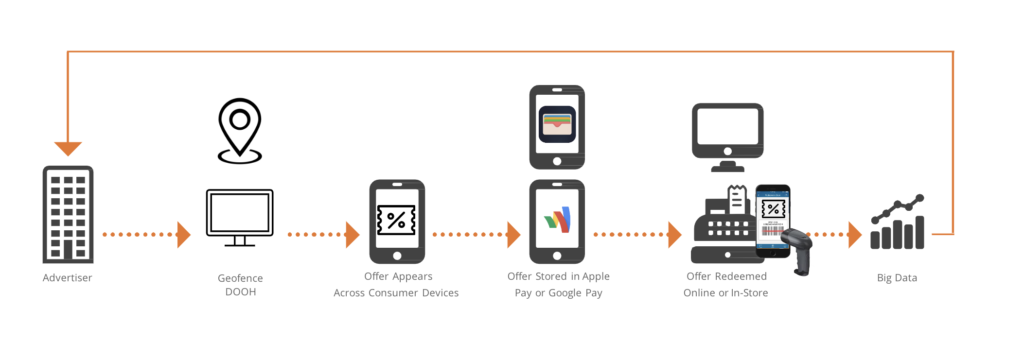
QR codes can be easily embedded into the campaign’s creatives. Once campaigns are live, advertisers can access real-time campaign performance data like total unique devices that have scanned codes, number of impressions, total number of QR code scans, and number of offers redeemed. Peak engagement times can also be tracked to give insight into when and how consumers are interacting with a brand.
Stay top-of-mind by continuously reconnecting with consumers
Incorporating QR codes into OOH campaigns has many benefits for both consumers and advertisers. For brands and agencies, different messaging can be displayed based on factors like time of day or a viewer’s location. This helps to extend the brand’s reach and marketing efforts to new locations, like retail environments, which can help drive sales and foot traffic. When a consumer enters an activated area, they can automatically be prompted with specific notifications and messaging, helping advertisers create an ongoing personalized experience.
Advertisers can also track every interaction and collect data in real-time to create targeted and contextual messaging. Enabling push notifications that deliver additional offers based on the campaign puts the brand in a top-of-mind position for the consumer. QR code-based offers can also help increase digital ad effectiveness by driving brand awareness and interaction without overexposing the consumer to ads. Campaigns can be optimized by A/B testing different offers and messaging in real-time, helping to close the sales loop and prove media marketing attribution.
Increase customer engagement across an entire campaign
The CPG and Retail industries are already familiar with the use of QR codes, though they’re way more prominent today than they were in the past. Many of the world’s biggest brands and retailers incorporate QR codes into their OOH campaigns to connect with consumers while helping drive impressions.
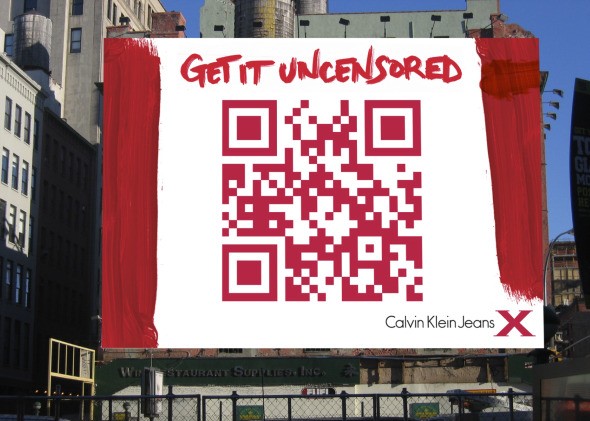

Let’s take a look at an example of an alcohol brand that launched a QR code activation campaign to promote its proprietary wine. The campaign ran across 12,000 screens in the US in 1600 building lobbies and elevators for a 2 month period, resulting in over 16 million impressions per month. When scanned, the brand’s QR offer displayed various bottles and wine packs in different sizes and prices ranges. Measurable data collected from this campaign showed a 10% week-to-week increase in customer engagement throughout the duration of the campaign.
Changing an ad’s call-to-action to a QR code can also help increase engagement, even if there is no promotion attached to the campaign. A cinema media company recently conducted a test with a popular movie release to measure the engagement of a QR code versus a vanity URL or text-to-screen CTA. They placed a dynamic QR code on-screen and invited viewers to scan it to unlock a short clip with additional content. The QR code was found to pull 6x more engagement than a vanity URL and 3x more than text-to-screen. For a moviegoer, scanning a QR code is easier and faster as most people have their cell phones with them during previews. For brands and advertisers, simply changing an OOH ad’s CTA from a URL or a 1-800 number can help yield big results in terms of engagement while also allowing them to reach larger and wider audiences.
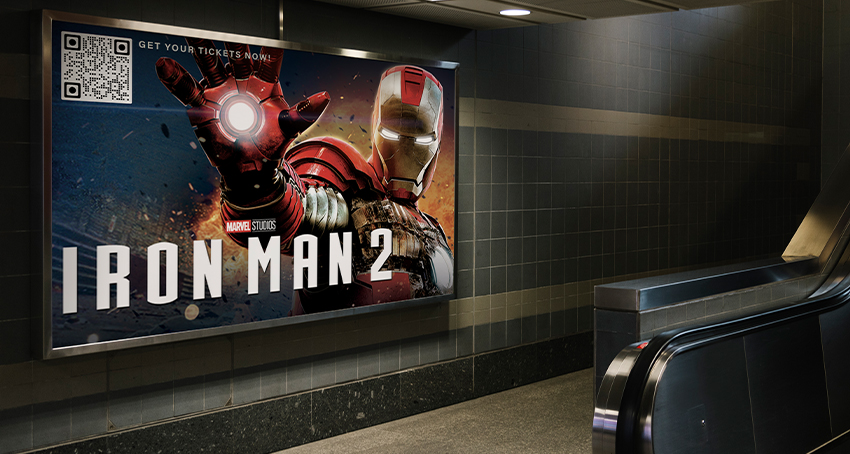
QR codes pull 6x more engagement than a vanity URL and 3x more than text-to-screen.
Making the comparison between different types of CTAs is critical for marketers and advertisers in evaluating the success of a campaign when it comes to measuring engagement levels. While QR codes can help drive sales or foot traffic, it can be difficult to attribute them to total consumer spend as it ultimately comes down to how good the offer is. If the goal is to drive engagement or create a unique brand experience, QR codes are a great option to turn any campaign into an interactive one.
To learn more about incorporating QR codes into your Campsite campaign, book a call with one of our experts.
How Salt XC approaches DOOH as a digital channel, as part of its unique agency model
Salt XC is a North American agency, headquartered in Toronto. Their agency is built around a unique model – Experiential Commerce™, breaking down the walls between the online and offline worlds using first party data, media and memorable moments to drive an action or transaction for brands. With an approach to marketing that seeks to earn attention and drive action, Salt XC stands out from other agencies thanks to its focus on a hybrid of marketing and tech as opposed to just traditional services.
We sat down with Alex Buckby, Managing Director – Media at Salt XC to discuss how his agency explores DOOH as a digital channel and the role programmatic OOH plays in their media mix. We also learn about his experience working with Campsite to launch CarDoor’s OOH campaign, focused on extending a data-driven digital approach into the real world. Using POI and location-based data to target high-value audiences in environments that could allow the creative treatment to earn attention and drive impact contextually, ultimately creating personalization with their core targets.
Want to learn more about running creative and impactful OOH campaigns?
Open a free Campsite account or book a call with one of our experts to plan your next campaign.
How CarDoor is using Campsite to reach car shoppers
For the majority of drivers, buying a car (especially secondhand) can be overwhelming and filled with frustration. Enter CarDoor, the Toronto-based company making it easy to buy and trade-in vehicles online. With CarDoor, shoppers can purchase high-quality, certified vehicles from the comfort of their own home – no dealership required. Their mission is simple: to make car shopping an easy, convenient, and enjoyable experience.
What makes CarDoor different from other car buying companies is the extensive inventory they have available thanks to their two-sided marketplace model. The platform can facilitate an entire buy or trade-in process for the consumer while also partnering with dealerships that sell their inventory on the CarDoor website. This allows the company to build a relationship with the customer over time and eventually have them purchase on their own terms.
We sat down with Matt McKenzie, Founder and CEO of CarDoor to discuss everything from CarDoor’s unique car buying platform to launching creative and impactful out-of-home campaigns with Campsite.
Here’s a recap of our discussion. You can also check out the full video here.
The misconceptions of DOOH
In the initial stages of planning CarDoor’s marketing strategy, they were unsure if they could afford to focus on building brand awareness through out-of-home. As Matt explains, there was a misconception that running DOOH campaigns would be too costly and wouldn’t reach the right audience. They initially thought that their marketing budget would be most impactful if spent on targeting high-intent customers, or customers who were very far advanced in the car buying process.
Turning to DOOH for creative and impactful messaging
To help create a marketing strategy that would reach a bigger audience, CarDoor began working with Salt XC agency to run creative and impactful campaigns that focused on building brand awareness. In an effort to reach potential car buyers in the right place and at the right time (when they’re looking for a new car), CarDoor and Salt Xc decided to focus on targeting audiences in a contextual, location-based way.
In doing research, they wanted to figure out how to target potential buyers in high-density areas. They found that people often decide they want a new car when they start to experience problems like noises and warning signals while driving their current vehicle. With this information, the idea of placing DOOH ads with specific creatives in areas near auto repair shops was presented.
Using Campsite to launch CarDoor’s DOOH campaigns
Going a step beyond placing ads close to repair shops, CarDoor and Salt XC then decided to buy DOOH space in very close proximity to traditional dealerships – sometimes even buying space on their rooftops.
Using Campsite, they were able to locate the radius of billboards and target audiences with creative and impactful messaging. These large, strategically placed billboards helped the company focus on building brand awareness while reaching the right people to convey their message of ‘car shopping made easy.’
They were also able to use Campsite to purchase ad inventory in test centers as a way to target Gen Zs waiting to take their driving tests. This strategy of running DOOH ads allowed them to reach an audience who’s already comfortable with shopping online in a contextual location.
Click here to watch the full video.
Want to learn more about running creative and impactful DOOH campaigns?
Open a free Campsite account or book a call with one of our experts to plan your next campaign.
How DTC meal kit provider Cook it uses Campsite for contextual Digital OOH advertising
For Quebec-based Cook it, enjoying easy, high-quality meals at home should be fun and accessible. Founded in 2014 by Montrealer
Continue readingCampsite’s Financial Moments: Sync campaigns and adapt your creatives based on market conditions
Following the success of Weather Moments, we’re excited to offer our second moment trigger within Campsite – Financial Moments!
Moment targeting uses dynamic triggers that sync data and context within Campsite, helping marketers run their most creative and impactful campaigns yet. With Financial Moments, marketers can use data surrounding the current state of the financial market to directly target consumers based on what they care about the most – their money.
Financial Moments for brand safety
Avoiding negative advertising situations can be just as important as capitalizing on the good ones. When it comes to advertising based on the market, Financial Moments offers brands the flexibility to run (or choose not to run) campaigns during specific financial times.
For companies like banks and investment services, avoiding bad associations when the market is down is a form of brand safety that shouldn’t be ignored. With Financial Moments, businesses can choose to play or pause ads based on the real-time performance of the market, like preventing certain ads from running during a dip.
Financial Moments for investment opportunities
On the flip side, running ads for banks and financial services when the market has dipped can be a strategic move in getting consumers to invest their money. Brands should appeal to the emotional aspect of consumers potentially losing money to promote the value of their services when the market fluctuates.
Marketers should also tailor their creative messaging to encourage consumers to take a look at their portfolios when there’s a dip in the market. Let’s take a bank for example: YoYo Bank could use a period of market uncertainty to run ads along the lines of “Keep Your Money Safe by Investing with YoYo Bank”. This creative can be rotated in amongst other product lines when the TSX doesn’t drop more than 3%. Alternatively, advertising certain services like mortgages or car loans when the market is up can also be beneficial as consumers are more likely to spend on these types of investments.
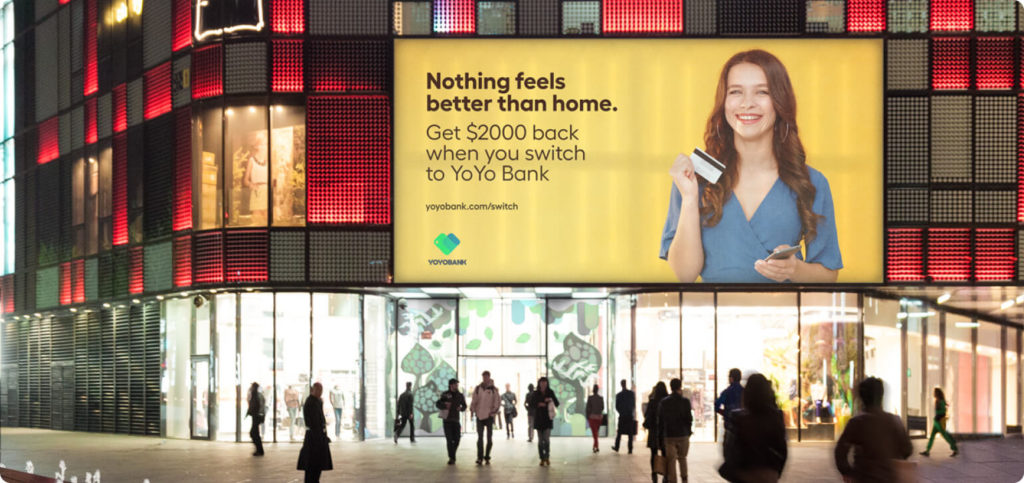
Financial Moments for Forex
Another great use case for Financial Moments is advertising around the value of currency trading, or Forex. Based on the value of local and foreign currency, marketers in industries like tourism and travel agencies can easily run ads that target people looking for vacation deals. Creative messaging can also be adapted to highlight the affordability of local commodities, activities, and lodging.
If you want to go a step further into building a high-impact campaign, we suggest combining Financial Moments with Campsite’s Weather Moments to create the perfect messaging around a vacation. Why not run an ad promoting tickets to an affordable, sunny destination while it’s snowing outside and the currency is strong?
Financial Moments for high-value commodities
Any marketer should be looking at financial markets when it comes to running campaigns around big-ticket commodities. For example, electric vehicles are often associated with high price tags that can leave consumers going back and forth on if purchasing one is the right move for their wallets.
Recent increases in crude oil prices, however, can be beneficial when it comes to advertising for these businesses. Oil price is tracked and made available as a financial moment within Campsite, helping brands to increase their advertising and share of voice when there’s an oil price hike. It’s important to remember that businesses shouldn’t only advertise during these oil hikes, but rather they should use these moments as a way to increase their advertising and SOV.
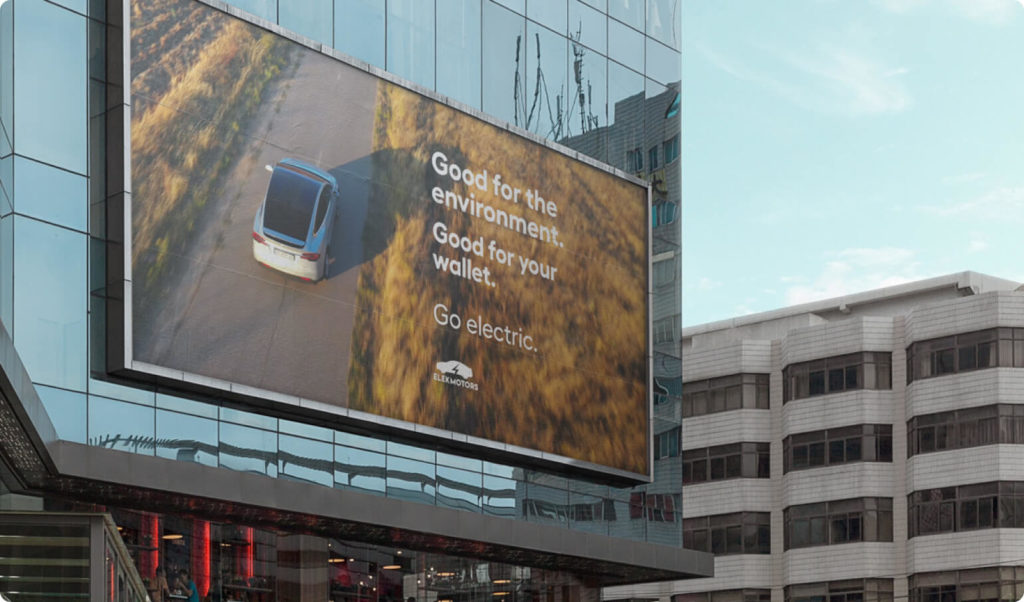
Financial Moments for Cryptocurrency investment
As cryptocurrency is volatile and price fluctuations commonly occur over any period of time, dips in the market present a good opportunity for marketers to advertise investment opportunities for crypto investors.
Investment services and crypto buying platforms like Coinbase can use Financial Moments to promote their offerings when the right opportunity arises, in this case when the market dips relative to the rolling average. Newer crypto companies can also use these financial triggers to advertise and increase their SOV.
Financial Moments for online shoppers
A growing number of online retailers are using real-time currency conversion to create a more seamless buying experience for shoppers. With financial moments, advertisers can adapt creative messaging to trigger a direct consumer response and encourage them to shop when the local currency is strong.
Let’s take hobby shoppers for example: running ads that promote bulk buying online can be a smart marketing strategy when the value of local currency is high.
Start experiencing Financial Moments within Campsite
As digital programmatic out-of-home becomes more sophisticated, advertisers should use financial moments to trigger creative and impactful campaigns that reach consumers wherever they are. It’s important to note that advertising around the state of the market shouldn’t be looked at as a way to capitalize on financial hardships, but rather to appeal to consumers during high-emotion moments to enable contextual and relevant advertising.
Need a summary of this new Campsite feature? We’ve got you covered. Click here to download it or log in to your Campsite account to try it out today!
To learn more about moment triggering, book a call with one of our campaign experts.
Three reasons why you should marry digital OOH and mobile advertising
Combining mobile and digital OOH is the perfect match, offering invaluable benefits to marketers. Let’s take a closer look at three reasons why.
Continue readingWATCH: How Main and Local promoted their city-themed products with digital out-of-home
When your products are inspired by a city’s unique culture, what better way to promote them than getting right back out in the city?
Continue readingWhy programmatic DOOH is the winning strategy for success in 2021
Want to hit this year’s marketing campaigns out of the ballpark? Read our blog to find out why is a must in your media strategy.
Continue readingEbook: Add a real-world kick to your digital advertising
Online and mobile advertising is great, but what happens when your audience is away from their personal device? With the Campsite DSP, launching a targeted and impactful digital campaign outside is easier than you think.
In this guide, you’ll learn how to:
👉 Augment your other marketing channels with digital out-of-home
👉 Build a strategic campaign using the Campsite audience segments
👉 Create a more impactful campaign using the Campsite environments
👉 Easily build and launch an efficient DOOH campaign
And more!
Instantly download the (ungated) ebook:


